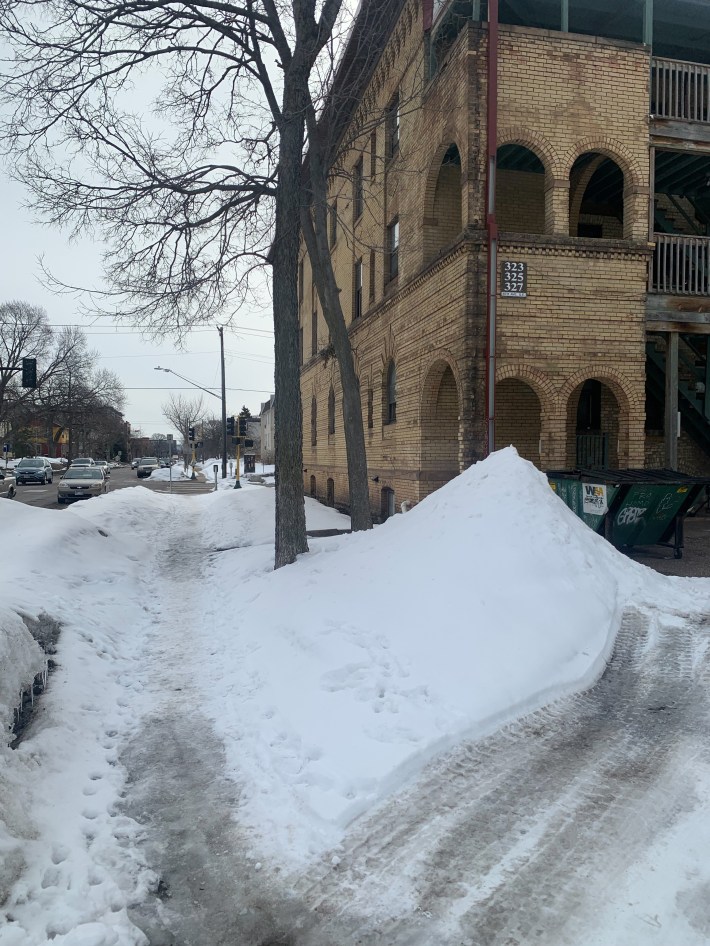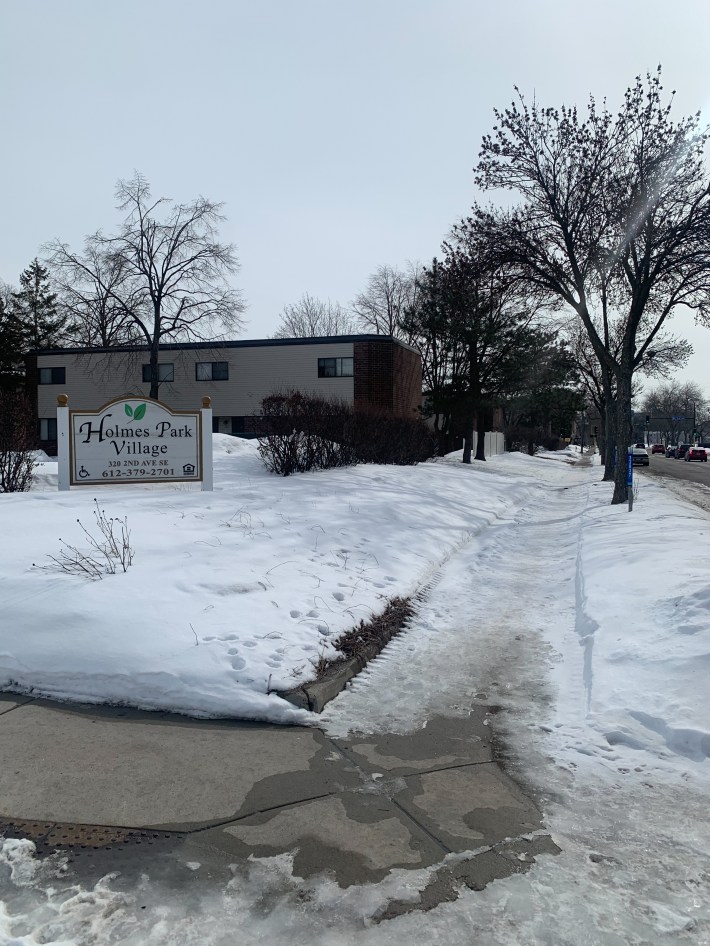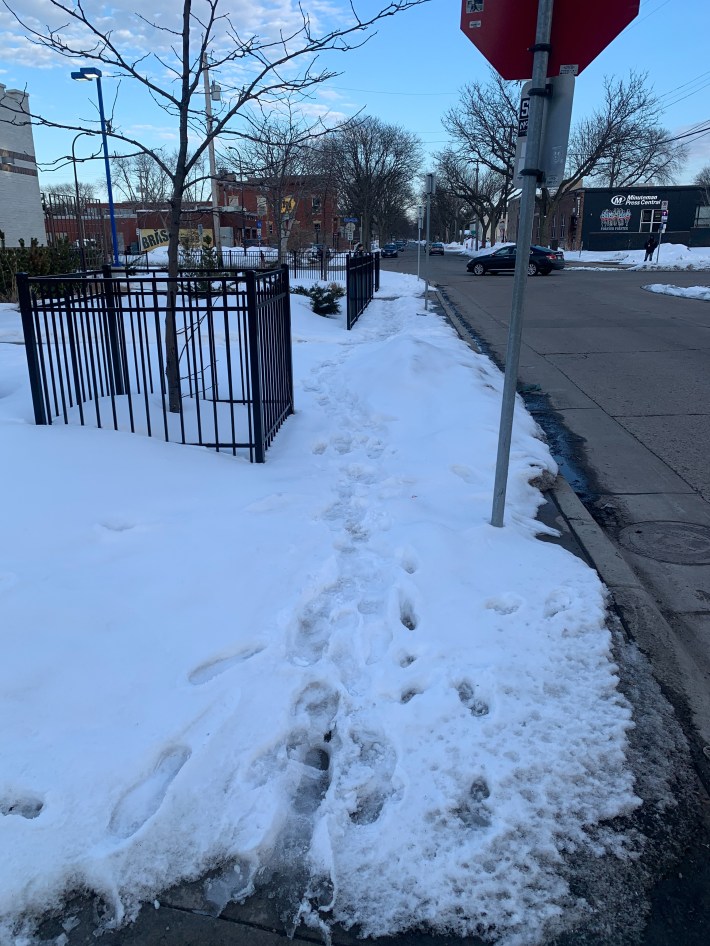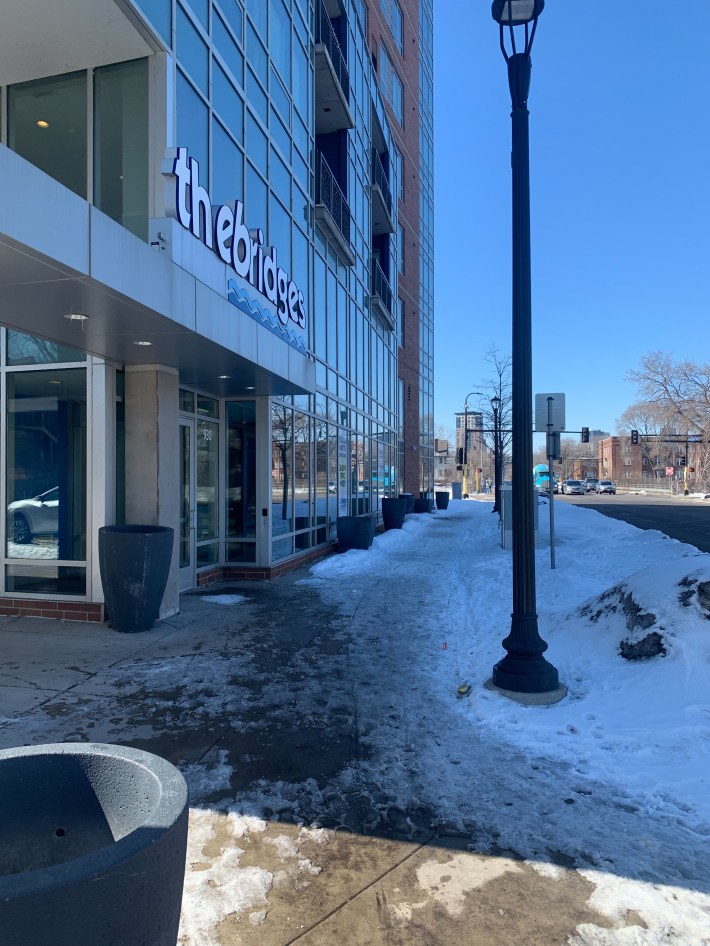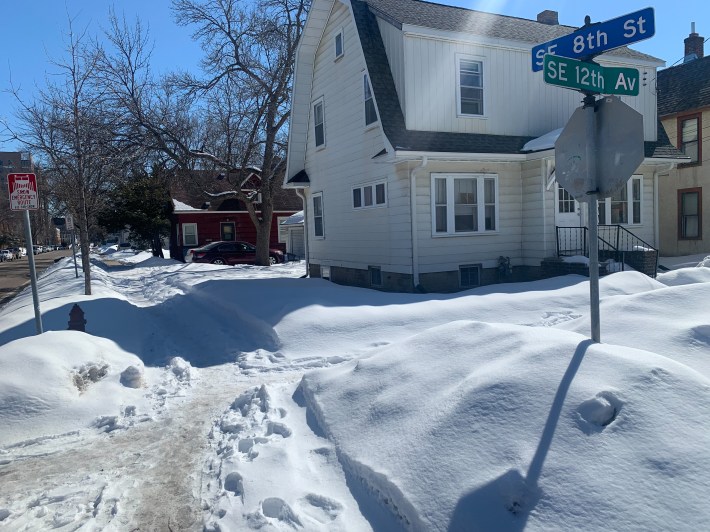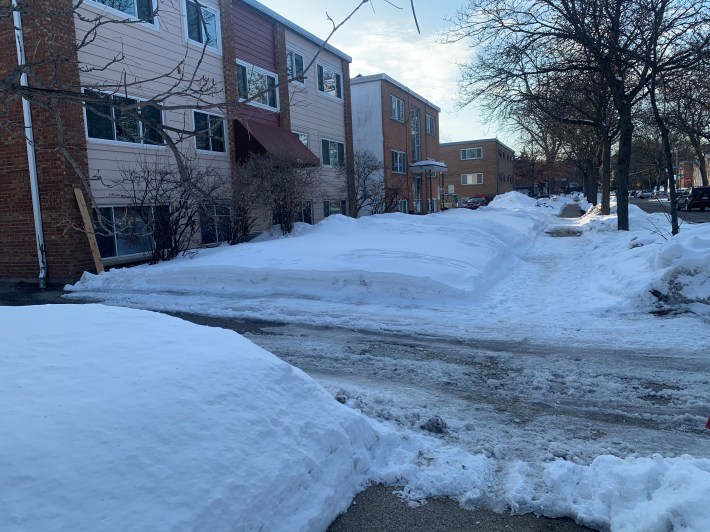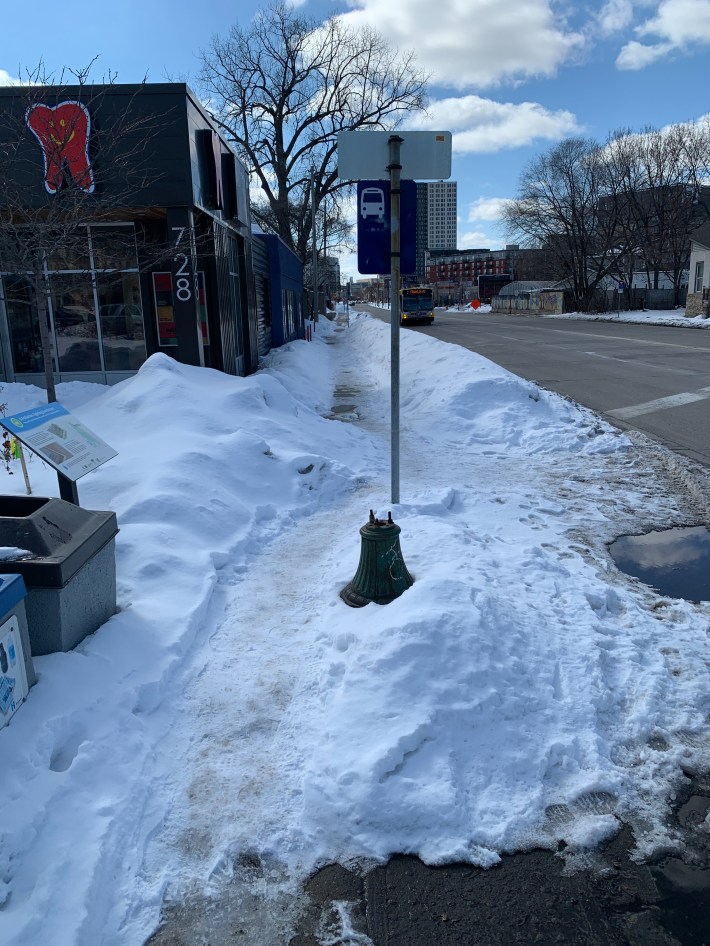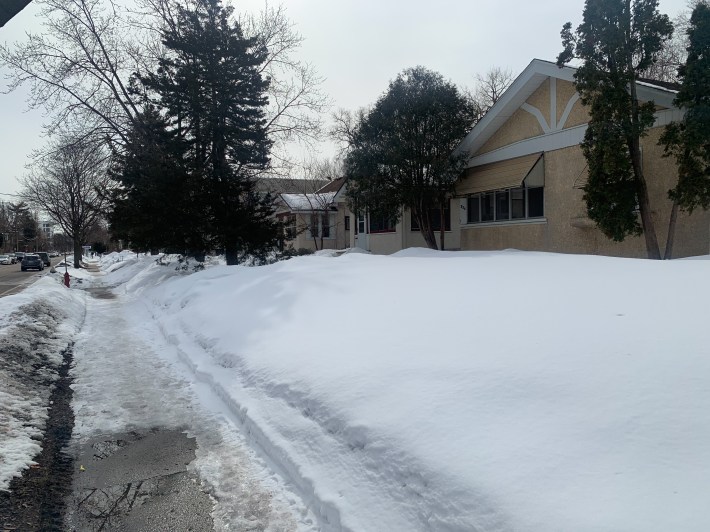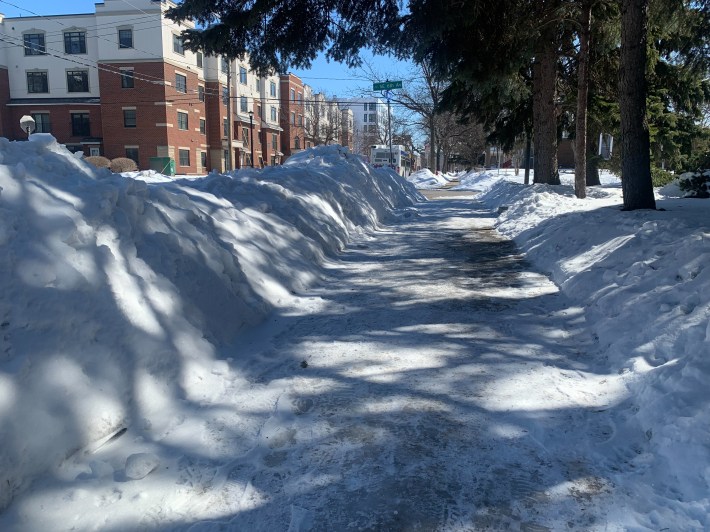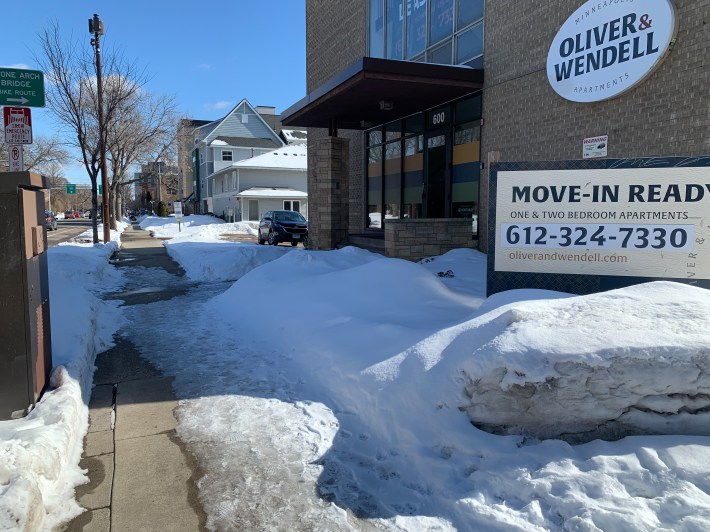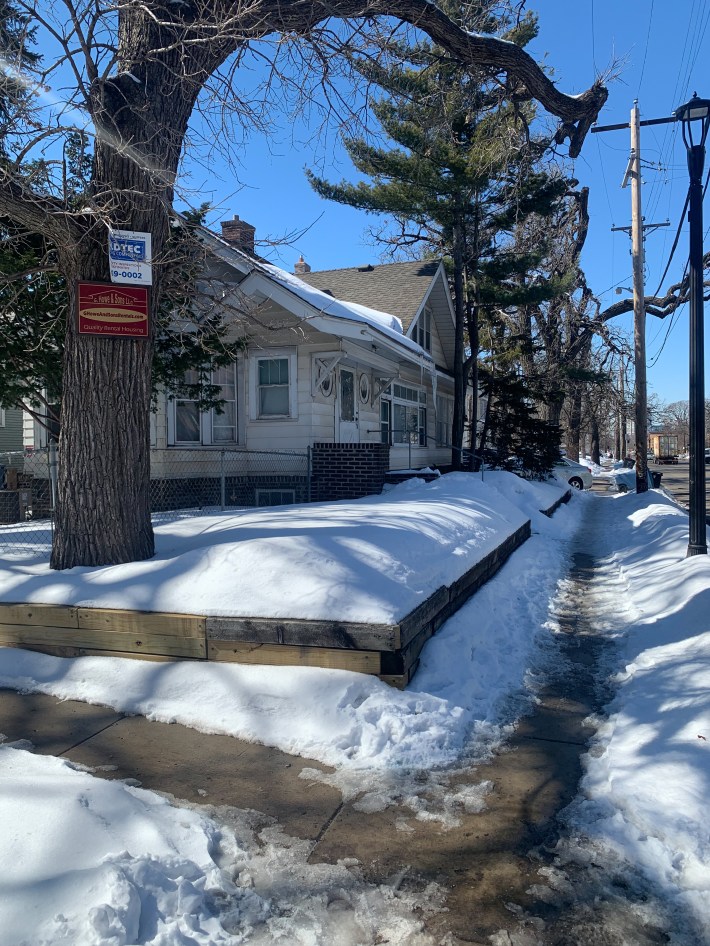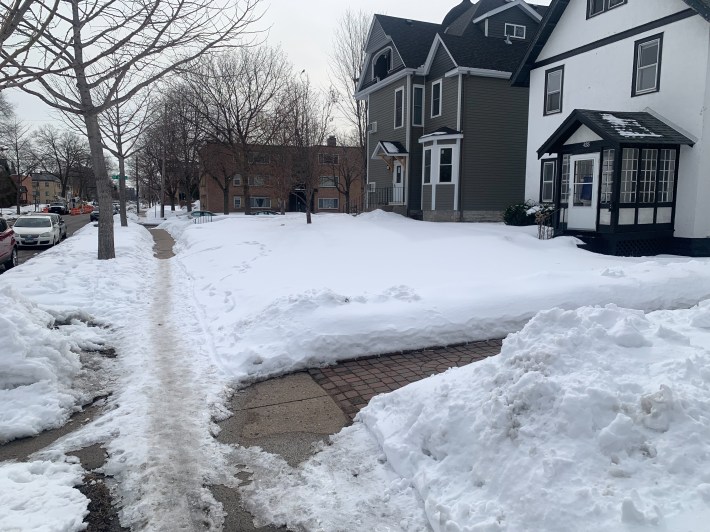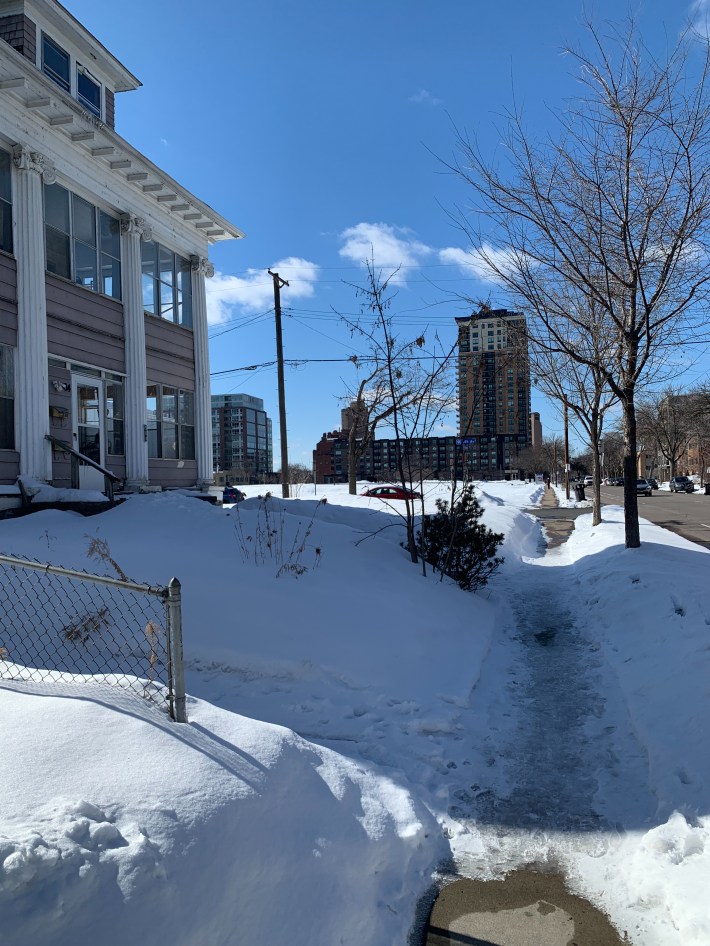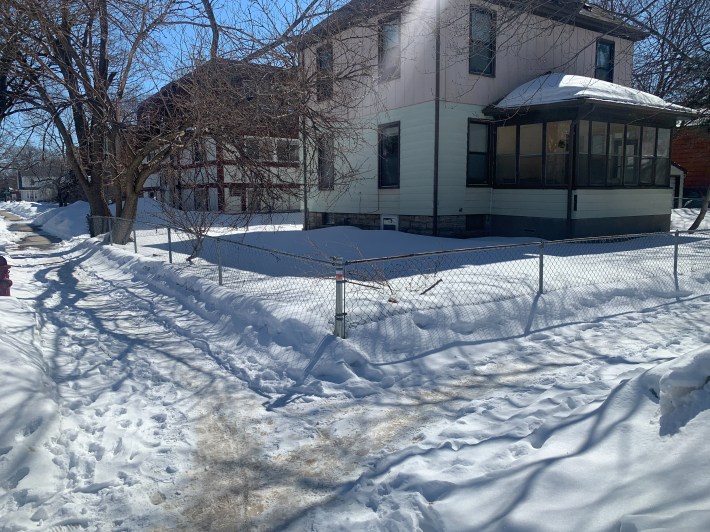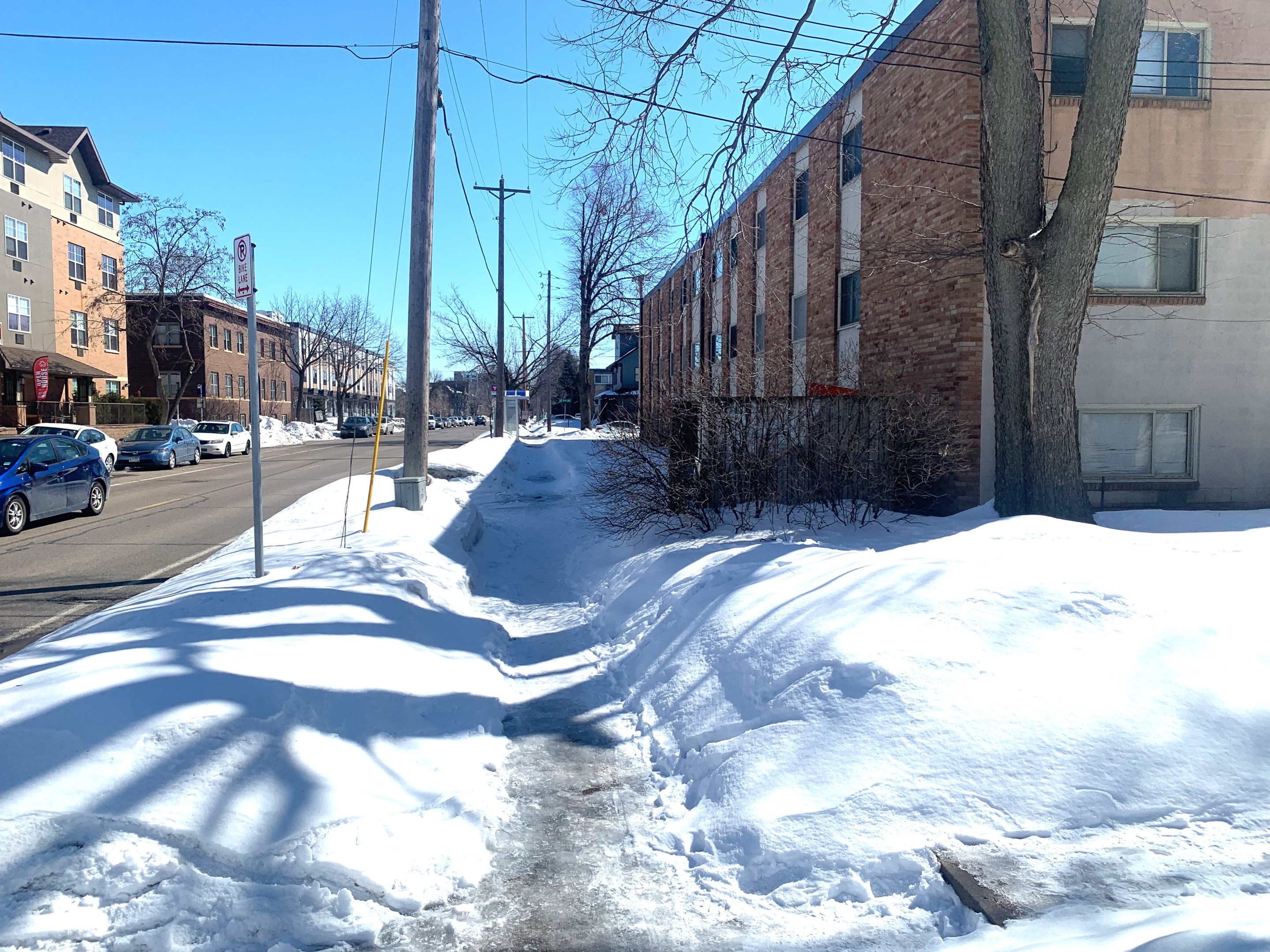As we plow, literally and figuratively, through the eighth-snowiest winter in Twin Cities history, genuine interest has been sparked around a concept that once hit Minnesota ears like utopian fiction: municipal shoveling programs.
Racket explored the very-real possibility (just ask Burlington, Vermont, Buffalo, New York, or Montreal) in-depth last winter, and members of the Minneapolis City Council recently championed the idea. "The issue is cost and practicability," countered Mayor Jacob Frey, adding that it's not a top priority (worth noting that Frey recently found time to launch a French fry-themed talk show); it would "cost taxpayers a pretty penny," one austerity-brained TV news outlet interjected. The Star Tribune reported a less ominous figure: $47 per resident each year to never worry about shoveling again.
Jordan Leick is glad the city council is studying the possibility of a municipal shoveling problem, but the avid Minneapolis walker is more concerned about the on-the-ground reality of our current model.
"One day, I was waiting at my bus stop and I saw a young woman slip and fall right next to the stop," the Marcy-Holmes resident says. "Fortunately she was OK, but I was really angry because the owner of that lot hadn’t been clearing their sidewalk all winter. Imagine if that had been my disabled friend or one of my family members with osteoporosis."
That fall inspired Leick to tour every block of his neighborhood that's included within the Pedestrian Priority Network—the city's 298-mile "grid of streets that represent where people frequently walk." Those streets are supposed to be prioritized for the "ease, comfort, and safety" for pedestrians, though that's not what Leick discovered last week.
Photographed 75 properties in my neighborhood that aren’t clearing snow and ice from their sidewalks. 60+ of them are on the city’s Pedestrian Priority Network. 12 of them are owned by the same guy! (Jim Eischens of Millenium Management) pic.twitter.com/nJWByp9KYU
— Jordan Leick (@GymJorts) March 15, 2023
Leick filed more than 80 reports of uncleared sidewalks to 311, including 60+ along the PPN route. He says 17 of those properties belong to Millennium Management, whose owner, Jim Eischens, has been the target of code violations for decades. (Millennium didn't immediately respond to Racket's request for comment.)
As Leick snapped photos of a particularly icy patch, he says a mail carrier told him she wanted to outright skip the address. “I’m not falling," she said. "I can’t afford that.” Can the city afford a $20 million annual program to make life easier and more livable for half the year? We sure think so, especially considering the fact there's little taxpayer handwringing over the $60 million the city paid in MPD misconduct cases from 2019 and 2022.
Leick, who serves on the Marcy-Holmes Neighborhood Association, knows year-round walkability is important to his student-heavy, majority-renter neighborhood. For now, he urges likeminded folks to utilize the only recourse available: 311 and online reporting.
"I’d like to see the city prioritize the speedy inspection and clearing of sidewalks that are on the Pedestrian Priority Network, and also proactively crack down on any property managers who have an extensive history of non-compliance at their properties," he says, reflecting on his scouting mission. "I think some people are currently willing to risk paying a fine or two because it's a lot cheaper and easier than actually clearing their sidewalks."
Here's a photo tour of Leick's slippery findings:
